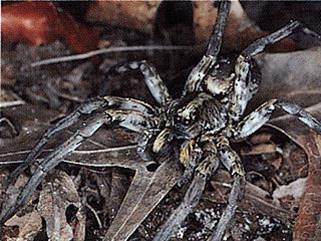Crab spiders are so named because they hold their legs to the side in a crab-like fashion. They are commonly 5 mm to 10 mm long. These spiders do not spin webs, but wait in ambush on flowers and foliage for their insect prey. Crab spiders such asMisumenoides, are often extremely well-camouflaged, blending in perfectly with the flowers they live among.
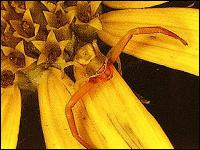
Golden Silk Spider
The Golden Silk Spider, also known as the Golden Orb or Banana Spider, is found throughout Florida and the southeastern United States. The female is distinctively colored, and is among the largest orb-weaving spiders in the country. The female is 25 mm to 40 mm long and has conspicuous hair tufts on her long legs. Males are about 4 mm to 6 mm long, dark-brown, and are often found in the webs of females. These spiders feed primarily on flying insects, which they catch in webs that may be greater than a meter in diameter. They are most commonly found in forests, along trails and at clearing edges.
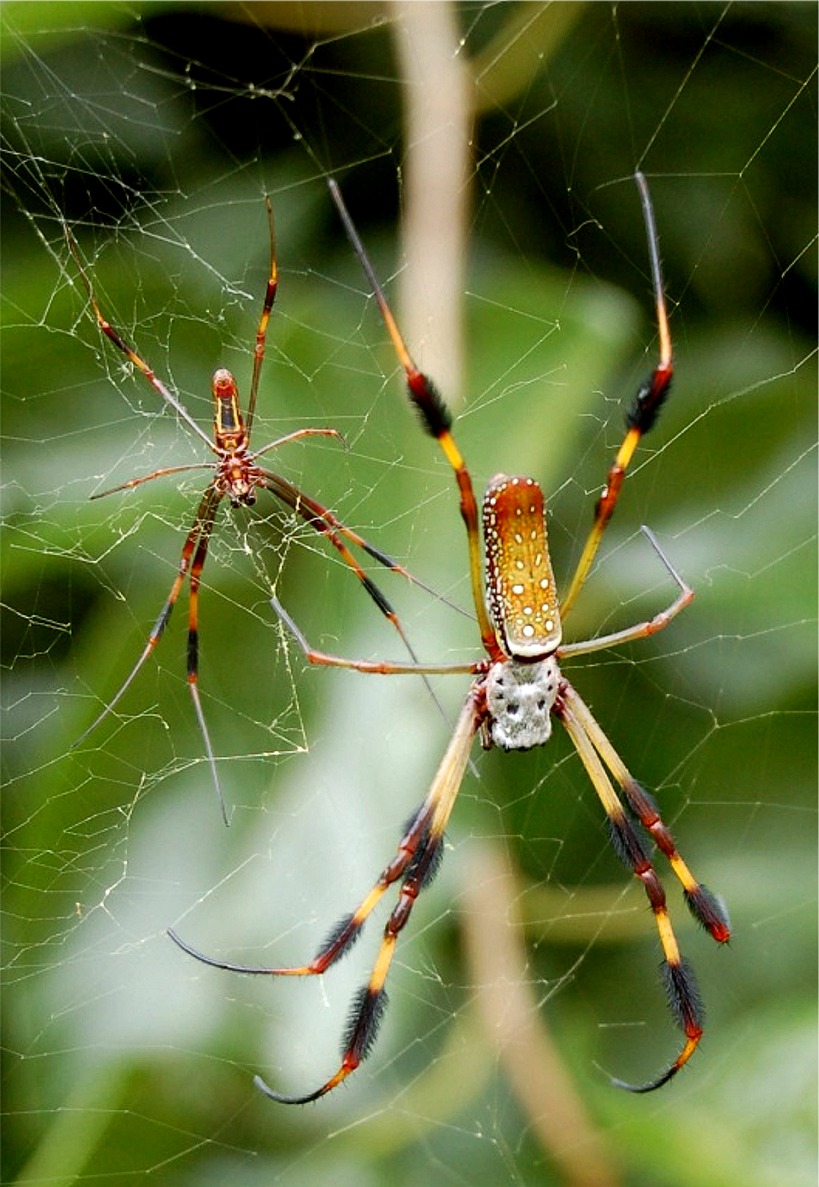
Jumping Spiders
The jumping spiders belong to the family Salticidae and are sometimes called salticids. All species are small, usually less than 15 mm long. They are easily identified by their eye arrangement, which is in three rows. Jumping spiders do not construct webs, but actively hunt prey during the day, pouncing on their luckless victims. Many are brightly colored, sometimes with iridescent chelicerae as in the genus Phidippus (Figure 1). Some species such as Plexippus (Figure 2) are commonly found on or around buildings.
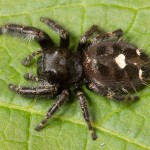
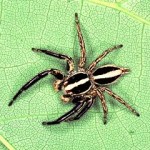
Spiny Orb-Weaver
The spiny orb-weaver spider is one of the most colorful and easily recognized spiders in Florida. The dorsum of the abdomen is usually white with black spots and large red spines on the margin. Females are 5 mm to 10 mm long and 10 mm to 14 mm wide. The webs typically contain tufts of silk, which may prevent birds from flying into them.
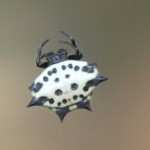
Wolf Spiders
Wolf spiders belong to the family Lycosidae. They are very common and usually found on the ground, where they are well-camouflaged. The Carolina wolf spider (Lycosa carolinensis), at 25 mm to 35 mm, is the largest in the United States. These spiders do not spin webs but some dig burrows or hide under debris. Like other hunting spiders, they have good eyesight and are sensitive to vibrations.
